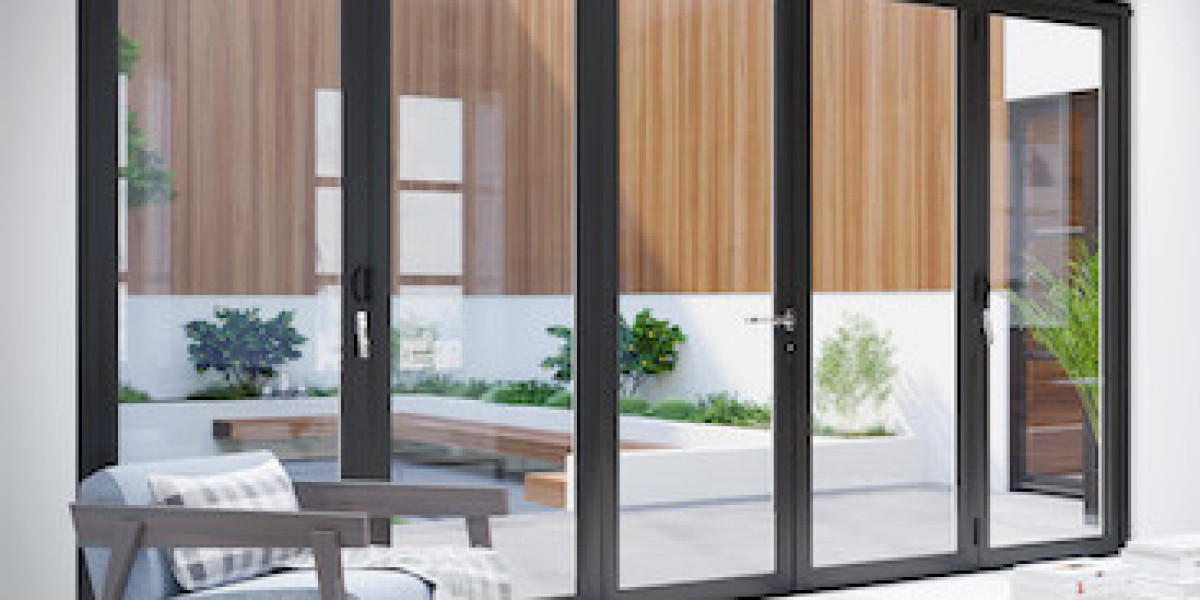Restoring Smooth Operation: A Comprehensive Guide to Repairing Your Bifold Door Top Pivot
bifold door track lubrication doors, likewise referred to as folding doors, are a popular option for taking full advantage of space and creating a smooth shift between rooms or in between indoor and outdoor living locations. Their unique folding system permits for larger openings than conventional hinged doors, making them perfect for closets, pantries, utility room, and even as patio doors. However, the smooth and efficient operation of a bifold door repair quote door hinges on a number of crucial elements, and among the most important, yet often neglected, is the leading pivot.
The top pivot is a small but essential mechanism that sits on top corner of a bifold door panel, allowing it to rotate efficiently within the track system. Gradually, due to use and tear, inappropriate alignment, and even unintentional damage, this pivot can fail. A malfunctioning top pivot can result in a host of discouraging concerns, from sticking doors and loud operation to complete immobility. Thankfully, fixing or replacing a bifold door top pivot is typically a workable DIY task, saving you the expense of expert repairs and restoring the functionality of your door.
This detailed guide will walk you through the procedure of understanding, identifying, and fixing a bifold door leading pivot. We will check out the components included, recognize typical issues, equip you with the essential tools and products, and offer a detailed repair process. Whether you are a seasoned DIY lover or a homeowner taking on home repairs for the very first time, this post will empower you to with confidence attend to a defective bifold door leading pivot and get your door operating smoothly as soon as again.
Comprehending the Top Pivot System
Before diving into the repair procedure, it's advantageous to understand the function of the leading pivot within the broader bifold door system. The top pivot, in conjunction with the bottom pivot (typically referred to as a guide or wheel), works to control the motion and stability of each door panel.
Typically, a bifold door system consists of:
- Top Track: A metal track installed horizontally at the top of the door opening. This track houses the top pivots and guides the door panel's movement.
- Bottom Track or Guide: Some bifold door systems use a bottom track, while others use a bottom guide that is either a pin or a wheel, communicating with a groove or channel on the floor or door jamb. This bottom part assists stabilize the door panel and keeps positioning.
- Top Pivots: These are small, normally plastic or metal components that are inserted into the top edge of the door panel and trip within the leading track. They permit the door panel to pivot and slide smoothly along the track.
- Connecting Hinges: Hinges that link the individual door panels together, enabling them to fold in a concertina style.
- Door Handles and Hardware: Hardware utilized for operating and securing the bifold door.
The top pivot bears a significant load, helping with the smooth sliding bifold door track repair and folding action of the door. It requires to be robust sufficient to endure constant use, yet exact enough to permit effortless motion. Comprehending its role helps in appreciating why its correct function is so important to the overall operation of the bifold door.
Identifying Common Top Pivot Problems
Recognizing the symptoms of a failing top pivot is the initial step towards an effective repair. Here are some typical indications that show an issue with your bifold door's top pivot:
- Sticking or Jerky Door Movement: The door ends up being tough to open or close smoothly, hesitating or catching as it moves along the track. This is often the most noticeable symptom.
- Noisy Operation: You may hear grinding, squeaking, or clicking sounds as the door is operated, suggesting friction or damage within the pivot system or track.
- Door Panel Drooping or Sagging: If the top pivot is worn or broken, Www.Repairmywindowsanddoors.Co.Uk the door panel may droop somewhat at the top, causing misalignment and more hindering smooth operation.
- Noticeable Damage to the Pivot: Upon assessment, you may be able to see cracks, chips, or breaks in the plastic or metal parts of the leading pivot itself.
- Door Jumping Out of the Track: In serious cases of pivot failure, the door panel may jump out of the leading track entirely, ending up being completely unusable and potentially damaging the door or frame.
- Increased Effort to Operate: If you discover yourself having to apply more force than normal to open or close the door, it could be an indication of increased friction due to a failing pivot.
If you observe any of these signs, it is extremely likely that your bifold door's top pivot needs attention. Overlooking these problems can lead to further damage to the door, track, or surrounding frame, making the repair more complicated and costly in the long run.
Tools and Materials You'll Need
Before you begin the repair, collect the needed tools and products to ensure a smooth and efficient procedure. Having everything prepared ahead of time will save you time and disappointment.
Tools:
- Screwdriver Set: A Phillips head and flathead screwdriver will be important for getting rid of and installing screws related to the pivot and door hardware. Ensure you have different sizes to fit different screws.
- Pliers: Pliers can be valuable for gripping and steering small parts, particularly if the old pivot is stuck or difficult to get rid of.
- Hammer (Optional): A light-weight hammer might be needed to carefully tap the new pivot into place, if needed by the style.
- Measuring Tape: To make sure precise placement and alignment when setting up the brand-new pivot.
- Pencil or Marker: For marking positions and ensuring correct positioning.
- Security Glasses: Protecting your eyes is important when working with tools and hardware.
- Gloves (Optional): To safeguard your hands and offer better grip.
Products:
- Replacement Top Pivot: This is the most essential material. It's essential to buy a replacement pivot that works with your particular bifold door system. Take the old pivot with you to the hardware store for comparison, or note down the door maker and model if possible. Leading pivots can be found in numerous sizes and designs.
- Lube (Silicone Spray or Dry Graphite): Lubricating the track and new pivot will make sure smooth, quiet operation and extend the life of the pivot.
- Wood Filler or Wood Glue (Optional): If the screw holes holding the pivot in location are stripped or harmed, wood filler or glue might be required to strengthen them.
- New Screws (Optional): If the existing screws are damaged or removed, have a set of replacement screws of the proper size and type on hand.
Step-by-Step Guide to Repairing the Top Pivot
With your tools and products all set, you can now continue with the repair. Follow these step-by-step instructions thoroughly:
Step 1: Safety and Preparation
- Place on your security glasses.
- Guarantee the work location is clear and well-lit.
- Gather all your tools and materials and place them within easy reach.
Action 2: Inspect and Access the Top Pivot
- Carefully analyze the leading pivot of the troublesome door panel to visually evaluate the damage. Look for cracks, breaks, or signs of wear.
- Identify how the pivot is attached to the door. Most are usually kept in location by screws.
- You might require to a little open or close the bifold door to acquire better access to the leading pivot.
Action 3: Remove the Old Top Pivot
- Utilizing the suitable screwdriver (typically Phillips head), thoroughly eliminate the screws protecting the top pivot to the door panel.
- If the screws are removed or difficult to remove, you might require to use pliers to grip the screw head and gently turn it. Prevent damaging the surrounding door material.
- When the screws are gotten rid of, gently take out the old leading pivot. If it's stuck, use pliers to carefully wiggle and pull it totally free.
Step 4: Prepare for the New Pivot (If Necessary)
- Inspect Screw Holes: Examine the screw holes in the door where the pivot was attached. If they are removed or enlarged, you may need to strengthen them.
- For Minor Stripping: Apply a percentage of wood glue into the screw hole and let it partially dry for a couple of minutes. This will give the screws a much better grip.
- For Severely Stripped Holes: Use wood filler to fill the stripped holes totally. Allow the filler to dry and harden according to the item guidelines. Once dry, pre-drill pilot holes a little smaller sized than the brand-new screws to guarantee a protected attachment.
Step 5: Install the New Top Pivot
- Position the new top pivot in the very same orientation as the old one was removed.
- Align the screw holes of the new pivot with the holes in the door panel.
- Insert the screws and tighten them securely with the screwdriver. Prevent overtightening, which might strip the screw holes or damage the pivot. Guarantee the pivot is securely connected but not excessively tight.
Step 6: Lubricate the Track and Pivot
- Use a percentage of silicone spray or dry graphite lubricant to the leading track of the bifold door, concentrating on the area where the top pivot will run.
- Likewise, lightly lube the moving parts of the brand-new top pivot itself. This will promote smooth operation and reduce friction.
Step 7: Test and Adjust
- Carefully run the bifold door, opening and closing it a number of times.
- Look for smooth, quiet motion. If the door still sticks or binds, re-inspect the pivot for appropriate setup and positioning.
- Guarantee the door panels fold and unfold properly which the door is not rubbing versus the frame or track.
- If needed, small changes to the pivot position or track alignment may be required. Consult your bifold door repair near me door manufacturer's guidelines for particular adjustment procedures if provided.
Step 8: Clean Up
- As soon as you are satisfied with the door's operation, tidy up your work area and put away your tools.
Troubleshooting Common Issues
While repairing a leading pivot is frequently uncomplicated, you might encounter some obstacles. Here are a few repairing pointers:
- Pivot Doesn't Fit: If the brand-new pivot doesn't suit the track or door, double-check that you have the proper replacement type. Compare it closely to the old pivot and the door requirements.
- Screws Won't Tighten: Stripped screw holes are a common problem. Refer back to Step 4 and use wood filler or glue to reinforce the holes before trying to tighten the screws again.
- Door Still Sticks After Pivot Replacement: If the door still does not run smoothly after replacing the pivot, the problem might lie in other places. Check the bottom pivot/guide, the track for debris or damage, or the door panel hinges for stiffness.
- Door Panel Misalignment: If the door panels are not lined up properly after repair, ensure the top pivot is effectively seated in the track and that the door panel is properly placed within the frame. Inspect for any warping or damage to the door panel itself.
Keeping Your Bifold Door Pivots
Preventative upkeep can considerably extend the life expectancy of your bifold door pivots and lessen the need for frequent repairs. Here are some handy upkeep tips:
- Regular Lubrication: Lubricate the top track and pivots with silicone spray or dry graphite every couple of months to lower friction and wear.
- Keep Tracks Clean: Periodically tidy the top and bottom tracks to get rid of dust, dirt, and particles that can hinder smooth operation. Utilize a vacuum cleaner or a brush to clean up the tracks.
- Check Regularly: Inspect the leading and bottom pivots routinely for signs of wear, damage, or looseness. Resolve any minor problems immediately before they intensify.
- Avoid Slamming: Avoid knocking the bifold doors, as this can put unneeded tension on the pivots and hardware, resulting in premature failure.
- Inspect Alignment: Periodically examine the alignment of the door panels to guarantee they are folding and unfolding properly which there is no unnecessary stress on the pivots.
When to Call a Professional
While DIY repair is often possible, there are scenarios where seeking expert aid is advisable. Think about calling a door repair professional if:
- You are unpleasant with DIY repairs.
- The damage to the door or frame is extensive beyond simply the pivot.
- You are unable to identify the appropriate replacement pivot.
- You come across persistent problems after attempting the repair.
- The bifold door is part of an intricate system, such as a multi-panel patio door, and requires specialized knowledge.
An expert door technician has the experience and know-how to properly diagnose complicated bifold door issues and perform repairs effectively and efficiently.
Fixing a fix bifold door hardware door top pivot is a fulfilling DIY task that can bring back the smooth and simple and easy operation of your door. By understanding the parts, identifying the issue, and following the step-by-step guide detailed in this short article, you can with confidence tackle this repair and conserve yourself time and money. Regular maintenance and prompt attention to minor problems will ensure the longevity and trusted performance of your bifold doors for years to come, contributing to the comfort and functionality of your home.
Regularly Asked Questions (FAQs) about Bifold Door Top Pivot Repair
Q1: How do I know what type of leading pivot to purchase as a replacement?
A: The best method is to get rid of the old pivot and take it with you to a hardware shop. Compare it aesthetically to the available alternatives, taking notice of the size, shape, and attachment method. Additionally, if you know the maker and model of your bifold door, you might be able to discover particular replacement parts online or through the producer.
Q2: Can I repair a broken leading pivot, or do I constantly need to replace it?
A: In many cases, it's more useful and reliable to replace a broken or worn top pivot rather than attempting to repair it. Pivots are fairly low-cost, and replacement guarantees correct function and longevity. Attempting to repair a broken pivot might lead to further issues and is generally not advised.
Q3: My screws are stripped and will not hold the brand-new pivot. What can I do?
A: Stripped screw holes prevail. Try utilizing a little longer or thicker screws. If that doesn't work, use wood glue into the screw hole and let it partially dry before re-screwing. For severely stripped holes, utilize wood filler to fill them completely, let it dry, and after that pre-drill pilot holes for the new screws.
Q4: Do I need to remove the entire bifold door to replace the leading pivot?
A: Often, you can replace the leading pivot without completely getting rid of the door panel. However, depending upon the style and accessibility, it may be easier to partly detach the door panel to acquire better access. In some cases, especially with much heavier doors or complicated systems, getting rid of the door panel may be much safer and more practical.
Q5: After replacing the leading pivot, my door is still hard to open. What else could be incorrect?
A: If the issue continues after pivot replacement, inspect other possible problems:

- Bottom pivot/guide: Inspect for damage or debris.
- Track: Clean and lubricate the leading and bottom tracks. Inspect for damage or obstructions.
- Hinges: Ensure the door panel hinges are not stiff or binding. Lube them if essential.
- Door Alignment: Check if the door panels are appropriately lined up within the frame.
Q6: How typically should I lubricate my bifold door pivots?
A: Regular lubrication every 3-6 months is suggested for optimal performance. More frequent lubrication might be needed in dusty or high-use environments. Use silicone spray or dry graphite lube to keep the pivots and track moving efficiently.







